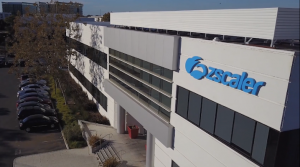Software-defined storage for data environments explained | #IBMedge
With the development of new storage technologies, the old ways of data management have evolved. Planning and strategizing new storage solutions while keeping new innovations in mind is the job of Bernie Spang, VP of Strategy Software at IBM. John Furrier and Dave Vellante, of theCUBE, recently spoke to Spang at the IBM Edge 2014 conference in Los Vegas.
![]() Spang talked about his new role at IBM and explained that, even though he had stepped into a new layer of the data software systems, it was still about data. To give IBM a competitive advantage, Spang said the company needs to focus on the amount of data generated and the entire environment associated with the generation of that data, including data management, protection, ease of availability, and the performance of that data within the storage environment.
Spang talked about his new role at IBM and explained that, even though he had stepped into a new layer of the data software systems, it was still about data. To give IBM a competitive advantage, Spang said the company needs to focus on the amount of data generated and the entire environment associated with the generation of that data, including data management, protection, ease of availability, and the performance of that data within the storage environment.
“When we talk about software defining environments as a strategy, we picked the word environment on purpose,” Spang said. “It isn’t a single system or data center. You have a software environment that is potentially global and spans both on-premise and on-cloud capabilities — a broad canvas on which to build a strategy.”
Building a new stack
When asked about what IBM’s approach to building a new stack, Spang responded, “The key points are supporting the existing and bringing it forward — bringing to bear proven technologies that we’ve been developing and using them in super computer environments.”
By remaining flexible in their approach, IBM plans to use newer technologies with older ideas to give them the flexibility and agility to meet their clients’ needs. By building a new stack on the foundation of proven technologies, IBM looks to provide answers for any large-scale problems in more “enterprisable” ways.
IBM’s Elastic Storage solution
With IBM’s new Elastic Storage solution, the plan is to offer software that works with anyone’s storage. This allows IBM’s customers to use and reuse existing storage to get more value out of their current storage solutions.
One of the innovations that allows the Elastic Storage to operate as it does is the virtualization layer. With its built-in data management capabilities, ranging from flash for top performance needs to tape, useful for storing seldom used data. Elastic Storage also has built-in security for added safety.
The next step in storage development lies in large-scale systems, according to Spang. Luckily, those developing these types of systems have gone mainstream. And while the traditional approach to storage solutions either can’t work or is too cost prohibitive, newer software can help make the next-generation of workloads easier to deal with.
A message from John Furrier, co-founder of SiliconANGLE:
Your vote of support is important to us and it helps us keep the content FREE.
One click below supports our mission to provide free, deep, and relevant content.
Join our community on YouTube
Join the community that includes more than 15,000 #CubeAlumni experts, including Amazon.com CEO Andy Jassy, Dell Technologies founder and CEO Michael Dell, Intel CEO Pat Gelsinger, and many more luminaries and experts.
THANK YOU









